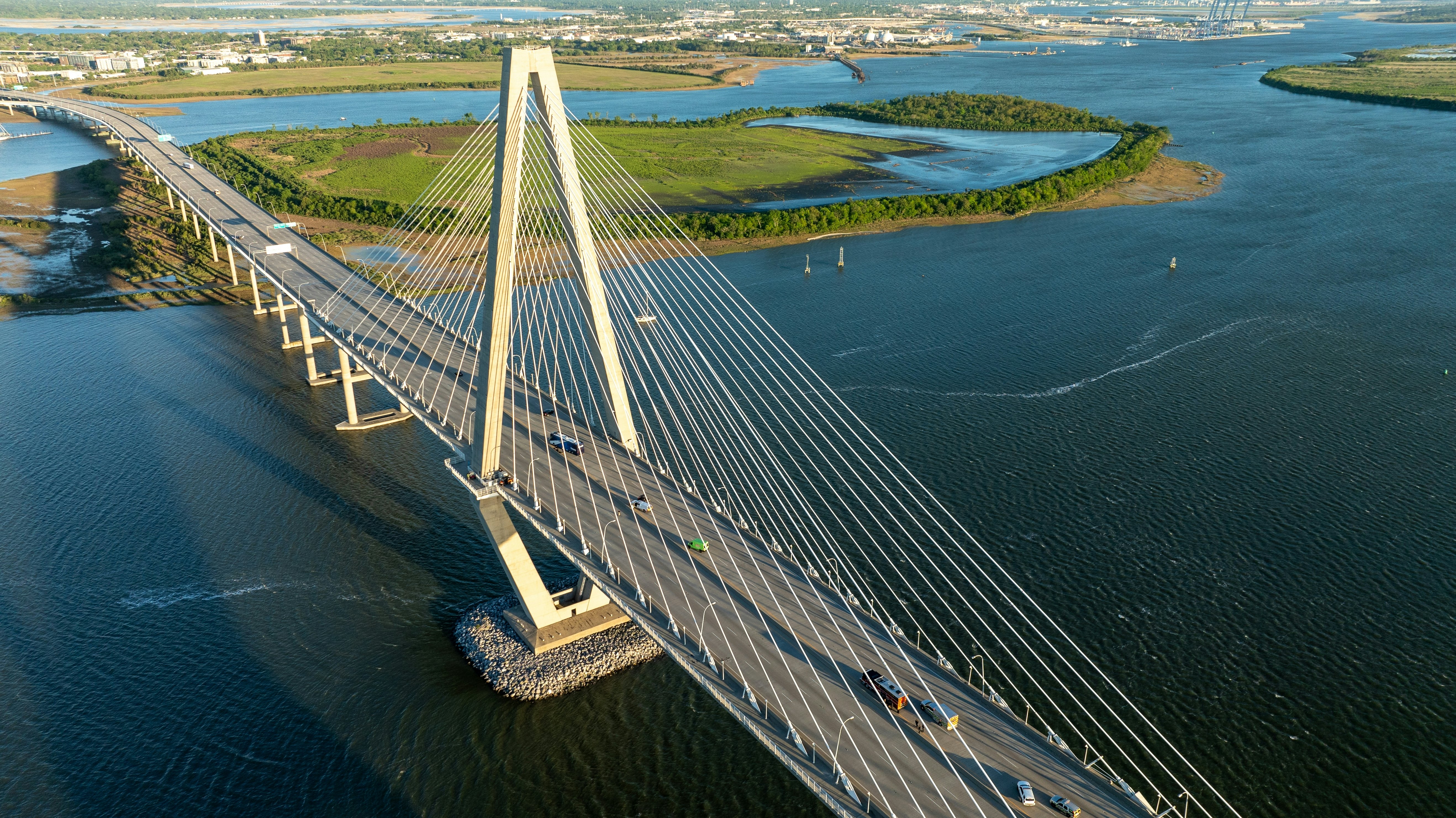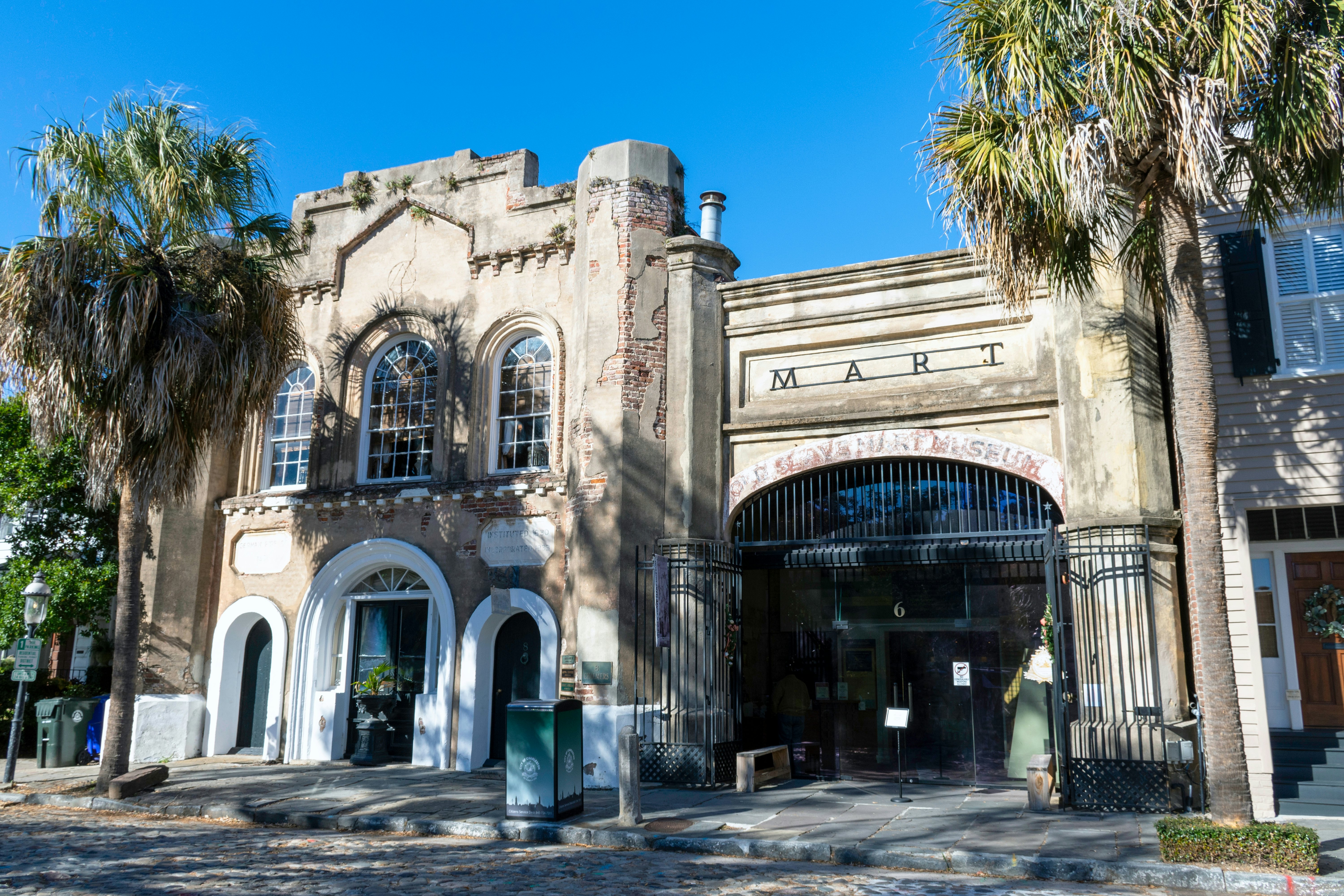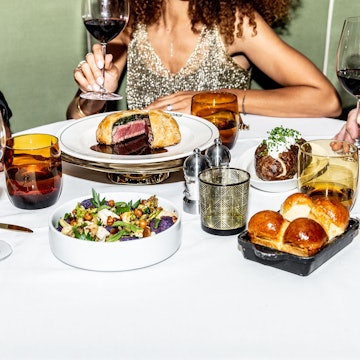

Colorful buildings lining a street in the downtown area of Charleston. f11photo/Shutterstock
Charleston may be known for its old-world charm but the city has upped its game. Carriage tours still clip-clop through the historic district and ferries still shuttle crowds to Fort Sumter, but new attractions and revamped old favorites are keeping the Holy City relevant โ and fun. Charleston is a walkable city that's easy to get around but you should spend at least three days here to make the most of its attractions.
Rooftop bars, innovative breweries and small-batch distilleries keep opening their doors, exciting festivals liven up the annual social calendar and plantations and historic homes are digging deep into Charlestonโs diverse and complicated history. And foodies take note: debates about the cityโs best barbecue are just as passionate these days as debates about shrimp and grits.
Whether you're enjoying a short getaway or a longer vacation, these are the top things to do in Charleston.
1. Wander through the Historic District
Historic Charleston feels like one big living museum, and it's easily explored on foot. Elegant homes, grand churches, weathered cemeteries and brilliant gardens โ often tucked behind wrought-iron gates โ hug the straight and narrow streets, which were laid out in the 1670s. Highlights include the Battery and White Point Gardens on the waterfront at the peninsula's southern tip.
Planning tip: The Charleston Visitor Center has a for history buffs. You can also drop by the center and pick up some maps for other themed tours.

2. Tantalise your tastebuds
With its seafood shacks, quirky mainstays and a dizzying array of โmust-tryโ restaurants from wunderkind chefs, Charleston has enjoyed a culinary hot streak for a decade. Many menus are built around Lowcountry dishes and seafood, but creative interpretations of old favorites keep the dining scene fresh. Beyond shrimp and grits, top regional fare includes oysters, pimento cheese, fried green tomatoes, she-crab soup and a Lowcountry boil (shrimp, corn, potatoes, sausage and seasoning).
Tried-and-true stalwarts include , oysters at and , and food thatโs both fast and French at . Barbecue is also hot, with and getting consistent local kudos. Top-notch international options are plentiful too.

3. Immerse yourself in Gullah Culture
Enslaved people trafficked from West Africa to the Lowcountry held onto many of their homeland traditions after enslavement was abolished. The resulting Gullah culture (Geechee in Georgia) has its own language and traditions, including amazing storytelling, art and music.
Learn about the history of this community at McLeod Plantation on James Island, where tours describe the daily lives of enslaved people on a cotton plantation and trace the emergence of the Gullah culture. There's also a wonderful annual celebration in late May at the in nearby Beaufort.
Detour: offers itineraries that visit historical sites in and around Charleston with expert guides.
4. Enjoy a wide choice of locally sourced spirits
Sweet tea is a distinctly Southern beverage and according to state lore the popular drink was created in South Carolina. The team at embraces this heritage with its sweet tea-flavored vodka, which is made with tea from the Charleston Tea Garden. uses ingredients and heirloom grains from across the Lowcountry and South Carolina for its popular spirits.
Planning tip: Tastings are available at both distilleries and Thursday through Saturday at High Wire.

5. Take a tour of historic homes
The Historic Charleston Foundation protects historic buildings in the city and advocates for the preservation of gardens, parks and neighborhoods. The foundation manages two historic buildings: The Aiken-Rhett House and the Nathaniel Russell House. Tours of the former, a townhouse that has been preserved but not restored, share details about past owners as well as the enslaved people who worked there. A self-supporting spiral staircase anchors the Nathaniel Russell House, a meticulously restored 1808 Federal Style building.
6. Learn about the Civil War at Fort Sumter
The shelling of Union-held Fort Sumter by Confederate forces in 1861 triggered the Civil War. The fort, which occupies a small pentagon-shaped island in Charleston Harbor, sees a steady stream of visitors, especially in summer. But even with the crowds, itโs easy to imagine the chaotic confusion of that historic day thanks to the remote setting โ a ferry ride is required โ and an engaging ranger talk that spotlights the historic clash.

7. Walk the Arthur Ravenel Jr Bridge
Burn off last nightโs shrimp and grits with a power walk over the graceful Arthur J Ravenel Bridge, which links the town of Mount Pleasant and the Charleston Historic District. The 2.5-mile pedestrian path over the cable-stayed bridge rises about 200ft above the Cooper River and provides gorgeous views of both communities. There's a parking lot with access to the pedestrian path in Mount Pleasant.
Planning tip: Time your visit with the end of the day for some excellent photos โ the view from the span is especially nice at sunset.
8. Tour the only tea garden in the US
Attempts to grow tea commercially in the US began in the 1820s in southeastern South Carolina, where the sandy soil, sub-tropical weather and frequent rainfall were well-suited for tea plants. In the 1960s wild tea plants from one of these early plantations were harvested and successfully re-planted on Wadmalaw Island 30 miles southwest of Charleston. Today, offers tours of its tea factory (free) and trolley tours of its acres of hardy tea plants.

9. Get out on the water
Flanked by creeks, marshes, rivers and the Atlantic Ocean, the Lowcountry is an ideal place for paddling trips and boat excursions. Wildlife and gorgeous coastal views abound. Keep it simple with a ride on the between Charleston and Mount Pleasant or scan for dolphins during the boat ride to Fort Sumter. runs dolphin-spotting tours and trips to uninhabited Morris Island. Numerous outfitters offer paddling trips through Shem Creek and Lowcountry creeks and marshes.
10. Relax in the gardens at Middleton Place
Designed in 1741, the elegant gardens at Middleton Place are the oldest landscaped gardens in America and they are also home to more than 100,000 azaleas. One of three historic plantations along the Ashley River northwest of downtown, Middleton Place owes its early beauty to the work of the enslaved people who spent years developing and maintaining the land. Their stories are shared onsite.
Planning tip: Book ahead to enjoy Lowcountry fare at the popular restaurant here.

11. Spend a day exploring Mount Pleasant
For a break from the historic district, board a water taxi at Waterfront Park and cross the Cooper River to Patriots Point in Mount Pleasant. At the Naval and Maritime Museum you can tour the USS Yorktown, an enormous decommissioned aircraft carrier used in WWII. Youโll need your car to visit Boone Hall Plantation and its striking Avenue of Oaks, planted in 1743. The most compelling buildings here are the original cabins that housed enslaved people. Explore charming Old Village then make your way to lovely Shem Creek for dinner by the water. Look out for dolphins and party boats.
12. Ride the Charleston Brewery Shuttle
A swings through the Charleston Beer District in downtown Charleston on Saturdays, stopping at ten breweries between 2pm and 8pm. Hop on and off as the mood takes you. has a fire pit on its rooftop while has 20 house-brewer beers on tap.

13. Find family fun downtown
If your kids dig spooky attractions, itโs hard to get much creepier than the dungeon at the Old Exchange & Provost Dungeon in the Historic District. The British held American patriots in the cramped space here during the Revolutionary War. The 385,000-gallon ocean tank and the sea turtle rehabilitation hospital lure in kids for a closer look at the South Carolina Aquarium and the Kidstory area at the Charleston Museum explores the cityโs history with hands-on exhibits. Enormous skeletons of prehistoric creatures keep things real in the natural history gallery. For skateboarding, head to , a 32,000ft concrete skatepark in North Charleston.

14. Visit the Old Slave Mart Museum
In the heart of the Historic District, this small but hard-hitting museum occupies the site of a former open-air market that auctioned enslaved people in the mid-1800s. Text-driven exhibits provide an unflinching look at the cruelties and horrors of the trade of enslaved people. Compelling oral histories from former enslaved people and a handful of chilling artifacts also make a powerful impression.
15. Delve into the city's history at the Charleston Museum
History hurtles at you from every direction in Charleston, which played a pivotal role in Americaโs past as a busy port city and center of trade. For a quick history primer, spend an hour or two in the . Exhibits dedicated to the cityโs early development and its role in the Revolutionary and Civil Wars provide helpful background and context. Artifacts highlight diverse experiences, including those of Native Americans, enslaved African Americans and influential politicians.
16. Sip cocktails on a rooftop bar
Swanky rooftop bars with sweeping views of downtown are plentiful. They are also easy to find โ just ride the elevator to the top of the trendiest hotels. Twinkling views of city lights and Charleston Harbor bring crowds to the iconic at the art-themed Vendue. Youโll find an infinity pool, illuminated umbrellas and more stunning city views at the atop the Market Pavilion Hotel.
Planning tip: If youโre heading to a popular rooftop spot during the warmer months, check to see if you need reservations to avoid waiting in line.

17. Get some retail therapy on King Street
King Street is the historic districtโs prime shopping corridor. With numerous stores selling home furnishings and housewares, Upper King is considered the design district while Middle King is the fashion district, home of well-known clothing stores as well as high-end boutiques. The southernmost stretch, Lower King, is dotted with antique stores. Pop into for new and used books, many focusing on the South.
18. Take a photo at Rainbow Row
Thereโs no shortage of photo-worthy spots in Charleston, but arguably, one of the most famous is Rainbow Row, a collection of 13 pastel houses built in the 18th century. Itโs hard to walk past the beautiful facades without seeing an impromptu photo shoot, and itโs an easy stop just a block from Waterfront Park.
Local tip: Once your photo op is over, there are plenty of historic, beautiful, although less social media-famous, homes to look at in the surrounding French Quarter.

19. Explore Charleston on foot
Charleston is a very walkable city and the best way to see the sights and explore it is on foot. There are guided tours covering many of the city's major landmarks, including architecture, ghosts, wartime history and more. , and all offer affordable options.
20. Escape the urban bustle in the city's parks
In addition to beautiful buildings and streets, Charleston has some stunning parks โ 120 to be exact. Relax and enjoy the scenery at Waterfront Park, which features 10 acres of waterfront views of the Charleston Harbor and Cooper River, plus the iconic pineapple water fountain. One of Charlestonโs most spacious parks is Hampton Park, where you can find beautiful flowers and a convenient public restroom.
Local tip: If you find yourself in Charleston on a Saturday morning, the farmers market at Marion Square is well worth a visit.

Plan with a local












